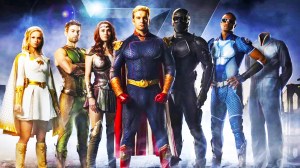Kingdom of the Planet of the Apes has landed a nomination at the 97th Academy Awards, which continues a long-standing Oscars streak in the franchise. The fourth movie in the rebooted Planet of the Apes franchise, Kingdom of the Planet of the Apes is nominated for Best Visual Effects at 2025’s Academy Awards. In doing so, the newest installment of the Apes franchise also follows in its three predecessor’s footsteps, with every modern Apes movie being nominated for Best Visual Effects at the Academy Awards.
Videos by ComicBook.com
Should Kingdom of the Planet of the Apes win its Visual Effects Oscar, it will also be the first contemporary Apes movie to do so. Additionally, the 21st-century Apes franchise is also not the first time the franchise has received Oscars recognition. The original 1968 Planet of the Apes received an honorary Achievement in Makeup Oscar for the make-up designed by John Chambers for the apes of the film. This was only the second such Oscar to be awarded for make-up, following 1964’s 7 Faces of Dr. Lao.
The Academy Award for Best Makeup did not become a regular feature of the Oscars until 1981, with An American Werewolf in London being the first winner at the 54th Academy Awards. This made the honorary Oscars win by the original Planet of the Apes that much more significant, but with the advance of technology, Hollywood’s approach to bringing the apes to life has also changed.
RELATED: Kingdom of the Planet of the Apes Sequel Confirmed But Fans Will Have to Wait
While the Apes franchise brought its humanoid simians to life with extensive make-up processes all the way through Tim Burton’s 2001 remake of Planet of the Apes, the modern Apes movies have moved into using motion capture. A digital process used to record actors’ movements and performances to transform them into fully CGI characters in movies and video games, motion capture first gained major prominence in the transformation of Andy Serkis into Gollum in the Lord of the Rings movies. Since then, motion capture has gained huge popularity in creating countless CGI characters in many sci-fi, fantasy, and superhero blockbusters, including in Andy Serkis’ performance as Caesar in the first three modern Apes movies.
Kingdom to the Planet of the Apes returned to using motion capture to create its apes, including the movie’s new ape hero Noa (Owen Teague), and villain Proximus Caesar (Kevin Durand). CGI also plays a major role in the Apes franchise beyond simply turning human actors into apes on-screen. With the post-apocalyptic setting of Kingdom of the Planet of the Apes, everything from the landscape of the world itself to the movie’s action sequences makes heavy use of CGI.
While the Planet of the Apes franchise was once mainly associated with elaborate make-up (usually taking several hours to apply to the actors), it is a sign of how much the Apes series has become a forerunner of advancements in filmmaking that it is now just as associated with the magic of motion capture. Kingdom of the Planet of the Apes securing a nomination for Best Visual Effects signifies just how well the contemporary Apes movies have mastered creating a world ruled by talking apes. With any luck, Kingdom of the Planet of the Apes can push that trend even further if it wins its Academy Award nomination for Best Visual Effects.
Kingdom of the Planet of the Apes is available to stream on Disney+ and Hulu.








